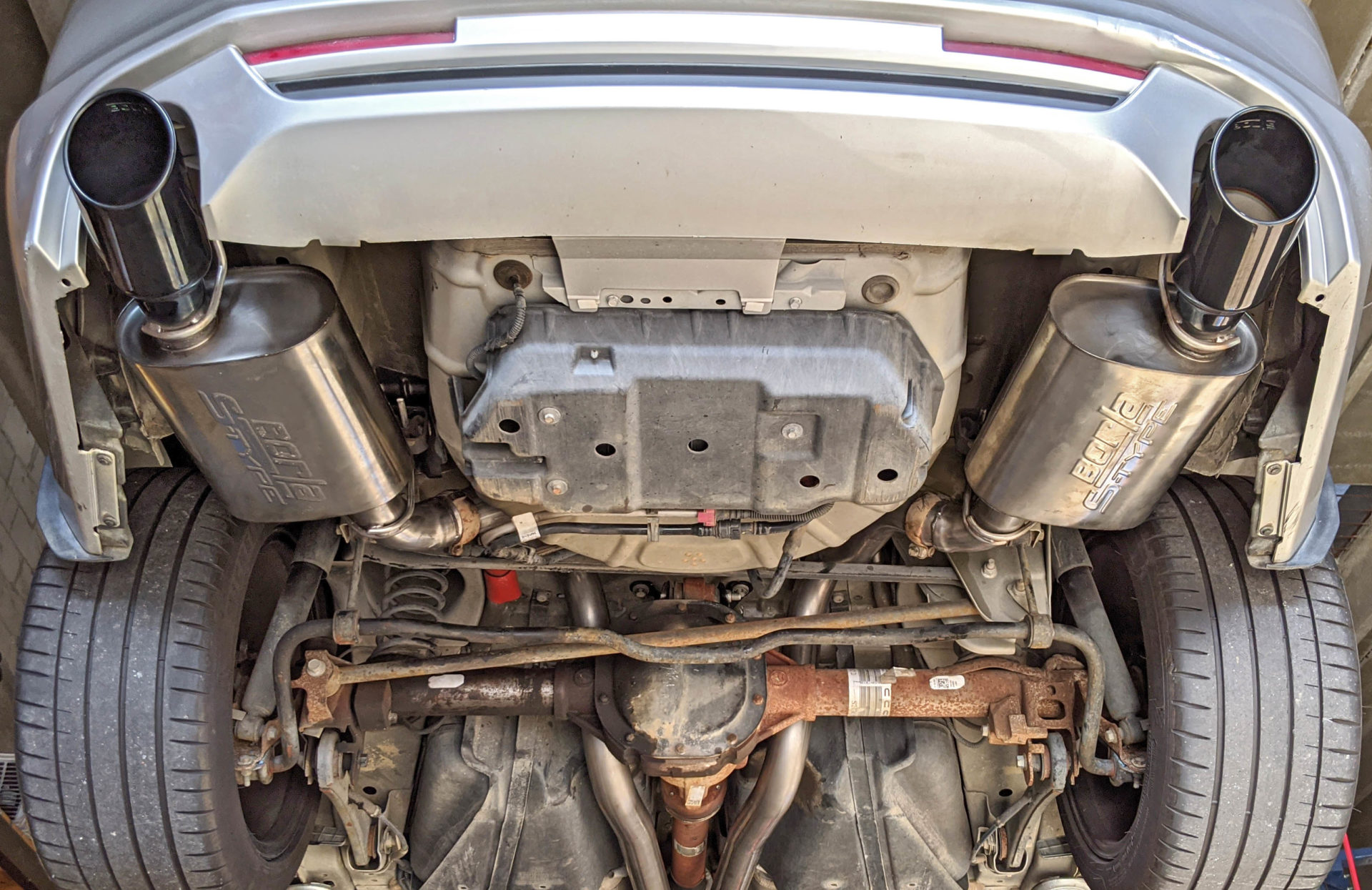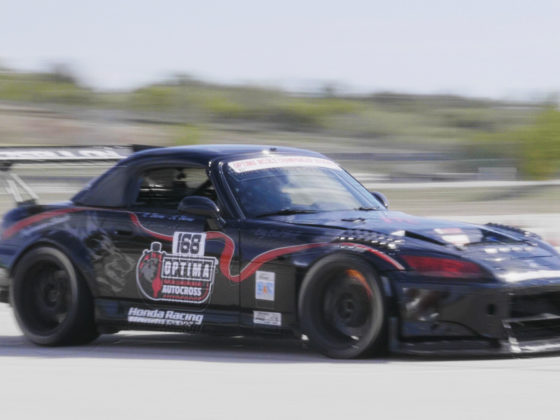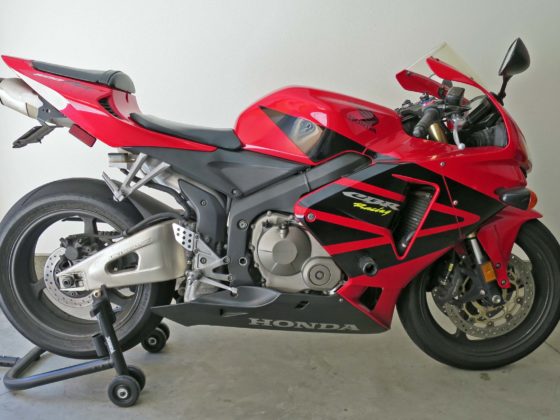 Next up we tested JLT’s massive “Cold-Air-Intake” made for the 2015-17 Gen-2 Coyotes. With a MAF size of 110mm, this intake has an even larger intake tube than the K&N “Race” Performance Air Intake.
Next up we tested JLT’s massive “Cold-Air-Intake” made for the 2015-17 Gen-2 Coyotes. With a MAF size of 110mm, this intake has an even larger intake tube than the K&N “Race” Performance Air Intake.
 This sheer size of the intake tube, the huge air filter, and zero shrouding will allow the engine to suck in as much ambient air as possible with very little restriction. After scaling the MAF to 110mm like we did for the K&N test, we were eager to see how much power this setup makes.
This sheer size of the intake tube, the huge air filter, and zero shrouding will allow the engine to suck in as much ambient air as possible with very little restriction. After scaling the MAF to 110mm like we did for the K&N test, we were eager to see how much power this setup makes.
 We were honestly a bit surprised to see the huge JLT intake (YELLOW) overlay almost identically with the K&N “Race” intake with the lid removed (GREEN). This shows us that the K&N intake with the lid removed is already able to suck in as much air as it can, and increasing the intake or air filter size any more yields no benefit -when on a dyno with the hood open.
We were honestly a bit surprised to see the huge JLT intake (YELLOW) overlay almost identically with the K&N “Race” intake with the lid removed (GREEN). This shows us that the K&N intake with the lid removed is already able to suck in as much air as it can, and increasing the intake or air filter size any more yields no benefit -when on a dyno with the hood open.
With this test completed, we now know that enclosing the K&N “Race” airbox on our setup only loses 8.75 WHP and 6.59 LB-FT of torque at 6,950 RPM on a static dyno. The definitive test will be to do pulls on the street in various gears with the lid on and off and data log the car’s torque output channel to see if having the lid on makes more than 6.59 LB-FT of torque at 6,950 RPM. That will put this entire argument to rest in terms of the effects of sucking in hot air without a restriction, or if the airflow of the car offsets a static restriction of having the hood on or even has a ram-air effect that makes more power.
 Now that our intake test was complete, there was still a little tuning left to do. We put the lid back on the K&N Intake, and Rob from Palm Beach Dyno played a little more with the intake cam position and timing to get back some of the low-end and mid-range that we were missing.
Now that our intake test was complete, there was still a little tuning left to do. We put the lid back on the K&N Intake, and Rob from Palm Beach Dyno played a little more with the intake cam position and timing to get back some of the low-end and mid-range that we were missing.
 Rob’s new tweaks of the tune (RED) picked up a massive amount in the mid-range, compared to the original tune (BLUE) that we’ve had on the car since we originally tuned for the 2018+ intake manifold. Both of these pulls were done with the K&N lid on.
Rob’s new tweaks of the tune (RED) picked up a massive amount in the mid-range, compared to the original tune (BLUE) that we’ve had on the car since we originally tuned for the 2018+ intake manifold. Both of these pulls were done with the K&N lid on.
Peak power only increased 2.58 WHP to 411.09 WHP, but torque jumped up 14.77 LB-FT to a max of 376.98 LB-FT. Gains from 3,200-5,700 RPM got us back the mid-range that were missing.
Quick Reference:
Page 1 – Stock Exhaust & Borla S-Type
Page 2 – Stock Exhaust Analysis
Page 3 – Crossover Pipe Removal vs Borla
Page 4 – Mid Pipe & Muffler Removal vs Borla
Page 5 – Borla Installation
Page 6 – Borla Installed
Page 7 – Dyno Borla & K&N Airbox Lid On vs Off
Page 8 – Dyno JLT vs K&N Intake. New PBD Tune Dyno
Page 9 – Dyno Overlays: Stock, Tuned Stock Intake Manifold, 2016 Mustang, 2018 Mustang, 2012 Boss 302, Conclusion




14 comments
Great write up with usable comparisons. Do race mustangs tend to stick with duals or go to single for weight?
The old FR500Cs had dual throttle bodies, but most Mustangs now use single round TBs for simplicity.
Really enjoy your perspective on so many things and this build is enjoyable to follow.
Page three, second paragraph first sentence says intake manifold, but probably meant exhaust manifold.
You got me, I got you 😉
Thanks for the feedback!
Thanks for the articles! Stay safe.
Very timely article for me, as I’ve been looking at 11-14 GTs as a fair weather DD, and part time track car. My brother has 12 Boss, but a TP/Brembo GT fits my needs and budget. Is there a Part 1 posted somewhere?
Thanks for posting. Looking forward to Part 4…
what was the alleged speed for the intake on road lid on test? and what gear?
I used nothing but Borla Exhaust on all the BDX Mustangs we made from 2007 to 2009. Love it. Trivia, in 1988 my Fox was the mule for the 1st Mustang Borla system. Alex borrowed it and I drove his T-bird for about 2 weeks.
That’s really cool historical fact! I have Borla on my Tundra tow vehicle, nice mellow V8 rumble in Touring spec. And got an S-Type coming for my Turbo 4 Camaro 1LE, which needs an exhaust note desperately.
Great information, I own a 2014 GT Mustang that I track 3 to 4 times a year, I have done some suspension and brake mods but no engine mods yet.
Really appreciate how methodical and well thought out all your articles are Billy!
Looking forward to seeing the continued progression of this car. Are you planning to road test the airbox lid comparison as described on Page 7?
Factory exhaust is 409ss not mild steel. Pretty much every factory exhaust since the 90s is 409ss. You will find steel components like flanges and hangers, but piping and mufflers are 409ss. Some later stuff is aluminized coated 409ss like the back half of Mopar exhausts, pickup truck tailpipes, generally anything somewhat visible from the outside of the vehicle.
Long tube headers, albeit expensive, will indeed provide for a substantial increase in RWHP….and RWTQ. You would be up to 450 rwhp with LT’s….and that is a bunch. But that would require either no cats..and an X….or a hi-flow catted X. Then the appropriate mufflers, to tame the noise/any drone. Resonators, just before the rear axle, would also tame noise down, if the mufflers didn’t do the job.
We didn’t want the car to be obnoxiously loud, which long tube headers often do. The car is already borderline with cats and the quietest muffler Borla makes. We are happy with the sound and performance with the current package, meeting our performance goals.